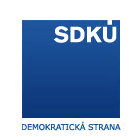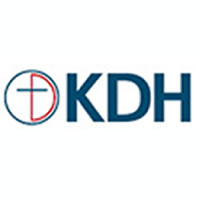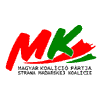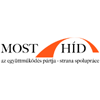 This is, I think, the last “dashboard” post for quite some time. The next time you see me post on this kind of thing, it will be an “election” post, but for the moment we have the kind of unusual situation we usually only see just before elections: three major polls appearing on the same day. Let me follow my usual pattern and deal with these party-by-party with a few words about coalition v. opposition.
This is, I think, the last “dashboard” post for quite some time. The next time you see me post on this kind of thing, it will be an “election” post, but for the moment we have the kind of unusual situation we usually only see just before elections: three major polls appearing on the same day. Let me follow my usual pattern and deal with these party-by-party with a few words about coalition v. opposition.
 Smer took a huge hit this month, with its lowest results in years: since May 2005 in FOCUS, since June 2006 in Polis, and October 2006 in MVK, an average drop of 4.5 (slightly more in FOCUS and Polis, somewhat less in MVK). Why the drop should be so large is a bit of a mystery to me. some journalists attribute it to party financing scandals, but I have a hard time believing that that news was particularly surprising or likely to pry voters away from the party. I’m more inclined to think that it’s a bit of frustration by soft Smer supporters forced finally to think about making their choice (and it’s notable that SDL has risen significantly in the polls for which we have information, suggesting voters looking for the next best alternative, particularly those with more culturally liberal values). It’s important to remember that in 2006 the final-week drop in Smer did not play out in the actual election and that the more accurate poll was one taken two weeks before the election, so some of this may be ephemeral. But nobody in Smer can be happy today. And for a party which has embodied the slogan “nothing succeeds like succcess,” some must be thinking of how to avoid failing like failure. I reprint the graphic from the dashboard here only because it is so dramatic:
Smer took a huge hit this month, with its lowest results in years: since May 2005 in FOCUS, since June 2006 in Polis, and October 2006 in MVK, an average drop of 4.5 (slightly more in FOCUS and Polis, somewhat less in MVK). Why the drop should be so large is a bit of a mystery to me. some journalists attribute it to party financing scandals, but I have a hard time believing that that news was particularly surprising or likely to pry voters away from the party. I’m more inclined to think that it’s a bit of frustration by soft Smer supporters forced finally to think about making their choice (and it’s notable that SDL has risen significantly in the polls for which we have information, suggesting voters looking for the next best alternative, particularly those with more culturally liberal values). It’s important to remember that in 2006 the final-week drop in Smer did not play out in the actual election and that the more accurate poll was one taken two weeks before the election, so some of this may be ephemeral. But nobody in Smer can be happy today. And for a party which has embodied the slogan “nothing succeeds like succcess,” some must be thinking of how to avoid failing like failure. I reprint the graphic from the dashboard here only because it is so dramatic:
 SNS gets a reprieve this month, probably thanks in part to the assistance of Hungary’s Fidesz, with a 1.5 point gain in FOCUS, a .7 point gain in Polis and no gain at all in MVK (which, however, showed a 1.2 point gain in its previous poll). National issues may count more than clientelism for some voters and the SNS campaign on this question (which some see as quite effective) may have helped here. It is hard to say whether the party will lose more from time in opposition (lost clientelist revenues, but time re-purify its image and play the outsider) or another stint in government (posts and money but ever more chances for people to find out how those were obtained).
SNS gets a reprieve this month, probably thanks in part to the assistance of Hungary’s Fidesz, with a 1.5 point gain in FOCUS, a .7 point gain in Polis and no gain at all in MVK (which, however, showed a 1.2 point gain in its previous poll). National issues may count more than clientelism for some voters and the SNS campaign on this question (which some see as quite effective) may have helped here. It is hard to say whether the party will lose more from time in opposition (lost clientelist revenues, but time re-purify its image and play the outsider) or another stint in government (posts and money but ever more chances for people to find out how those were obtained).
 HZDS also gets a small reprieve losing slightly in FOCUS but recovering to some degree in MVK and Polis, for an overall average of 5.2, far too close for anyone’s comfort. This recovery may actually help it a bit as those who were on the fence for the party feel comfortable voting for it one last time, but its overall negative momentum and air of decline may be to hard to overcome. This one is very tough to call
HZDS also gets a small reprieve losing slightly in FOCUS but recovering to some degree in MVK and Polis, for an overall average of 5.2, far too close for anyone’s comfort. This recovery may actually help it a bit as those who were on the fence for the party feel comfortable voting for it one last time, but its overall negative momentum and air of decline may be to hard to overcome. This one is very tough to call
Overall the current coalition dropped three full points in June, to an overall average of 42.0, a remarkable drop for a coaltion that in less than two years ago polled 69.8. Smer alone had poll averages of 41.0 as recently as January of this year. The drop is so quick that it is hard to fully accept it and I suspect the overall election final will be a bit more, but we need not wait long now.
 Polls of SDKU usually lack a clear monthly pattern and this month is no exception: stable at a high level in Polis, dropping from a middle level in FOCUS, rising from a low level in MVK. The median stays around 14 where it has been for quite some time. For SDKU it is especially hard to say whether poll numbers are related to final numbers as for the past 4 elections the party has outperformed its poll, though Martin Slosiarik and others note that the emergence of SaS may diminish that undercounting based on last minute shifts.
Polls of SDKU usually lack a clear monthly pattern and this month is no exception: stable at a high level in Polis, dropping from a middle level in FOCUS, rising from a low level in MVK. The median stays around 14 where it has been for quite some time. For SDKU it is especially hard to say whether poll numbers are related to final numbers as for the past 4 elections the party has outperformed its poll, though Martin Slosiarik and others note that the emergence of SaS may diminish that undercounting based on last minute shifts.
 KDH has some of the same low-level chaos as SDKU. No big trends like Smer or HZDS, but lots of movement and poll shifts ultimately adding up to 10% (as it has more or less for almost two decades). This month the pattern is converging: Polis and MVK dropping from high levels to just over 10%; FOCUS rising from low levels to just under 10%.
KDH has some of the same low-level chaos as SDKU. No big trends like Smer or HZDS, but lots of movement and poll shifts ultimately adding up to 10% (as it has more or less for almost two decades). This month the pattern is converging: Polis and MVK dropping from high levels to just over 10%; FOCUS rising from low levels to just under 10%.
 SaS finally falls back into the earth’s gravitational pull this month, still rising but by a lower margin (.60) than in all but one month since October 2009. Both FOCUS and MVK show it stabilizing at around 12 points and while Polis still shows a rise it is to that same 12 point level. How much of this the party will sustain in the election is an open question: past new parties in Slovakia have lost in the voting booth, but as I’ve mentioned elsewhere, TOPo9 and VV in the recent Czech election managed to mobilize voters. Could this have something to do with their mastery of social networks and other technological turnout mechanisms? Hard to say, but if it does, then SaS might manage the same trick.
SaS finally falls back into the earth’s gravitational pull this month, still rising but by a lower margin (.60) than in all but one month since October 2009. Both FOCUS and MVK show it stabilizing at around 12 points and while Polis still shows a rise it is to that same 12 point level. How much of this the party will sustain in the election is an open question: past new parties in Slovakia have lost in the voting booth, but as I’ve mentioned elsewhere, TOPo9 and VV in the recent Czech election managed to mobilize voters. Could this have something to do with their mastery of social networks and other technological turnout mechanisms? Hard to say, but if it does, then SaS might manage the same trick.
It is interesting that despite the significant drop in the current coalition, the Slovak right did not see corresponding gains this month. In fact it dropped slightly from 36.7 to 36.1 (suggesting that supporters of the current coalitions are going elsewhere, either from Smer back to HZDS and SNS or to “new” parties like SDL). This probably is not bad news, as it suggests a certain solidity to the overall vote total of SDKU, KDH and SaS (and indeed the core vote of this population has been quite solid at about this level from one election to the next and its relative success in seats has been affected more by the distribution of the vote between parties over and under 5%. This year despite lots of expectations to the contrary even a year ago, the right is relatively coherent and, thanks to the small/new party vacuum effect of SaS, should lose little to small parties and so has a good chance of getting seats in proportion to its base).

 Both Hungarian parties continue to pass the threshold in all major polls, if only by a hair. This continues to astound me: if you take two parties whose total support averages 10.6 for the last year and divide the 10.6 at random the chance of getting two parties above the 5% threshold is itself only about 5%, and yet these two parties continue to manage that 1 in 20 shot at not undercutting Hungarian parliamentary representation in exchange for a small chance at maximum gain (though this of course is not what the two party leaders themselves are thinking). We will see very soon whether their luck will hold out.
Both Hungarian parties continue to pass the threshold in all major polls, if only by a hair. This continues to astound me: if you take two parties whose total support averages 10.6 for the last year and divide the 10.6 at random the chance of getting two parties above the 5% threshold is itself only about 5%, and yet these two parties continue to manage that 1 in 20 shot at not undercutting Hungarian parliamentary representation in exchange for a small chance at maximum gain (though this of course is not what the two party leaders themselves are thinking). We will see very soon whether their luck will hold out.
 Finally, I think it is necessary to say a word about SDL about which I have said nothing for the entire campaign, largely because until this month it averaged less than 2% and never exceeded more than 2.8%. Suddenly, the party has jumped by a significant margin in every poll and stands at 3.8% and is staring closely at the 5% threshold. Only two other non-parliamentary parties have exceeded even 3.3% in the past four years and both of them–SaS and Most-Hid–have a good chance of getting into parliament. It is doubtful that SDL will be able to cross that remaining 1.2% in the final week (SPOZ in the Czech Republic could not manage it, though that’s not much of a guide here) and it is likely that its preferences reflect frustration that will translate into staying home or reluctant Smer voting, but its emergence is a sign of weakness that Smer does not wish to have revealed:
Finally, I think it is necessary to say a word about SDL about which I have said nothing for the entire campaign, largely because until this month it averaged less than 2% and never exceeded more than 2.8%. Suddenly, the party has jumped by a significant margin in every poll and stands at 3.8% and is staring closely at the 5% threshold. Only two other non-parliamentary parties have exceeded even 3.3% in the past four years and both of them–SaS and Most-Hid–have a good chance of getting into parliament. It is doubtful that SDL will be able to cross that remaining 1.2% in the final week (SPOZ in the Czech Republic could not manage it, though that’s not much of a guide here) and it is likely that its preferences reflect frustration that will translate into staying home or reluctant Smer voting, but its emergence is a sign of weakness that Smer does not wish to have revealed:












